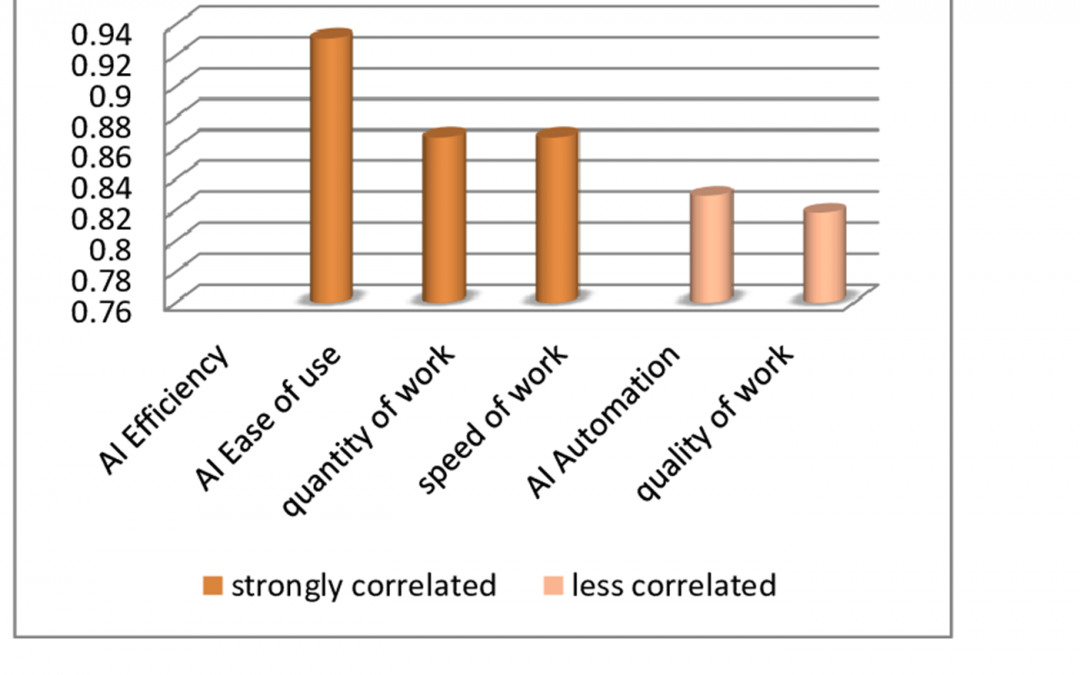
by Art Waskey | Feb 19, 2025 | Art of Sales Weekly, Featured
Central to any good business plan is the possibility of expanding. I am working with a distributor who asked me to advise him on adding a new branch store. When I was part of a distributorship’s executive team we often met to discuss adding more locations. We found that careful research was critical when considering expanding.
Distinctive challenges
Each business presents its own distinctive challenges when looking to expand. Here are some important factors to consider before opening a new branch.
- New market potential – A new location often is proposed by an existing customer, or a new potential client. They indicate a willingness to do business if you have a store nearby. For example, a company running a large long-term construction site or a new manufacturer may be interested in your goods and services if they are readily available. In many cases, distributor vendors and other local businesses will request and encourage penetration into the new market as well. Consider these collaborators when doing your market research for the potential site. A new branch is a large investment. It is advisable to hire a consulting company that does data development for your industry to define all potential customers in the new area.
- Identify competition – Strong distributors do regular strength, weakness, opportunity, and threat (SWOT) analysis of their competitors. Does a weakness in product availability, service levels, and/or other customer marketing analysis indicate a significant opportunity for your business? An important part of a business expansion strategy is identifying your competition in a new target market. Continuously monitor your competitors’ activities and adapt your marketing strategies in ways that will differentiate you in this new market.
- Expanding your best business practices – I have clients who have invested in the digitalization of their business with progressive ERP, eCommerce, product identification, sophisticated websites, and other software advancements. Since these practices are transferable, they can be employed in new locations. The distributorship I worked for realized its information technology development was considerably better than our competition’s. Our digital efficiency with best business practices allowed us to expand our locations and market reach successfully.
Considerations
Growing your business is important to success. Adding a new branch location is an effective way to do that. When considering a new branch location, research its market potential and competition. Use your digital tools to make your expansion as efficient as possible.
Get tips and tricks like the above in The Art of Sales books. Or subscribe to the FREE monthly articles here.

by Art Waskey | Feb 11, 2025 | Art of Sales Weekly, Featured
Ease, Efficiency, and AI
It’s hard to underestimate the power of AI. It is adding another layer of sophistication to the digitally transformed world. By enabling businesses to analyze data quickly, AI allows companies to offer their products and services more easily and efficiently.
Improving the bottom line
Here are four ways AI can help you improve your bottom line.
- Accelerating Continuous Improvement (CI) – Generative AI enables companies to accelerate their CI planning. It is an agent for constantly improving specific repetitive tasks. AI can also, analyze performance metrics, identify areas of improvement, and make necessary adjustments to enhance business operations.
- Revolutionizing Sales – The digital transformation has revolutionized the sales process. A salesperson can now present to multiple decision-makers. In preparation for those calls, Generative AI can provide insight into customer needs and each participant’s interests. For instance, this informed machine learning process changes the salespersons’ posture toward customer needs from reactive to proactive. Ensure your sales team is adept at using AI’s powerful sales tools.
- Creating strategic business plans – AI Smart Analytics uses Application Performance Management (APM) software. Also, it can create a single integrated digital thread across a company’s whole asset life cycle. This enables your entire executive team — from CEO to finance, operations, sales, and marketing managers — to have insight and input into your strategic business planning.
- Maximizing profits – The adoption of AI is accelerating rapidly. You must understand how the application of these tools impacts your bottom line. Moreover, a data-driven approach to sales and operations allows distributors to analyze their asset development for a maximum return on investment.
Ease and efficiency
The overarching goal of a successful distribution business is to provide products and services with ease and efficiency. Lastly, becoming more productive with AI tools allows you to grow and prosper. As the cost of entry to these tools continues to decline, the opportunities for improving your return on the investment are enormous. My advice — digitize as fast as you can.
Get tips and tricks like the above in The Art of Sales books. Or subscribe to the FREE monthly articles here.

by Art Waskey | Jan 29, 2025 | Art of Sales Weekly, Featured
The word is out – or I should say, its initials are — AI. AI is dominating discussions in distribution, from webcasts to conferences. It’s reshaping your industry—time to embrace it and stay ahead. Digitize as fast as you can.
The benefits of AI
Here are some of the important ways AI can sharpen distributor operations.
- Improving order entry — Progressive distributors, suppliers, and customers are already using functional ERP, eCommerce, and product content software solutions. A distributor’s current goal for customer-digitalized order entry should be at least 30% of sales. Moreover, that means about a third of your customers are placing orders without direct human interaction with your staff. Data collected via digitalized order entry enables AI applications to analyze customer order frequency, cross- and up-sell, and apply effective pricing trends.
- Streamlining order processing – With AI order processing can be completed using text, emails, faxes, PDFs, or even verbal commands. One software developer sells a system that uses OpenAI ChatGPT, Microsoft CoPilot, or Google Gemini to assist a salesperson using a cell phone. Also, it allows a seller to take a customer request, prepare a quote, and even place the order. Additionally, innovative digital developers will come to your company and train your sales, operations, and supply chain employees on their products. Many can have new software operational in a matter of days.
- Training new employees – As experienced employees retire, companies lose their wisdom and knowledge base. AI can provide deep learning by analyzing the skill set of experienced employees and then creating training materials from that analysis for new hires. Chatbots and virtual assistants can provide on-the-job training for each new work challenge encountered.
Digitize now—AI is revolutionizing sales and operational processes. Lastly, it is making it easier to target sales to customer needs. Don’t miss this train. Hop on board and digitize now.

by Art Waskey | Jan 22, 2025 | Art of Sales Weekly, Featured
The challenge
Life offers us ideas and opportunities in random ways which makes the ability to follow our passions challenging. Acting on them, however, is key to success and happiness. Here is the tale of three brothers who all set out in one direction, but followed their passions and ended up in new and rewarding locations.
The farmer
My youngest brother chose to follow his two older brothers and earn a degree in engineering. He enjoyed a successful career in that field but along the way he discovered other passions. While in his mid-forties, his company transferred him to Virginia where he found he could afford to buy acreage east of the Blue Ridge Mountains. There he built a large country house and started raising livestock, chickens, ducks, and other feedstock. Now in his early 70s, he and his wife, a retiring schoolteacher, have a successful farmstead. He even operates his own small slaughterhouse. Today, my brother and his wife feel they are finally focusing on their true passion — growing their farmstead business and teaching agricultural skills to others.
The communicator
I am the middle brother, and I followed my older brother into engineering. Early in my career, I discovered my talents went beyond math and engineering and centered on communicating. I was a natural salesman. I frequently attended programs where others were speaking. Interestingly, I often felt I should be the one speaking. In my 40s, I acted on that instinct, joined Toastmasters International, and earned a Distinguished Toastmaster Certification. In my 60s I earned a Master of Ministry degree in Evangelical Christianity. Today, I am a writer, public speaker, consultant, and pastor. When you act on your passions they bring you peace, enjoyment, and success.
The foodie
My older brother, the one who led us into engineering, enjoyed a lucrative career in that field. In his 50s, however, he gave it up to pursue his passion. He purchased a delicatessen and became an accomplished chef.
Act on your passions Life is short but the journey is long. Pay attention to what brings you joy along the way. Set achievement goals and act on your passions to find true success.

by Art Waskey | Jan 14, 2025 | Art of Sales Weekly, Featured
When you can follow your passions, success is never far behind. Yet acting on your passions is often a bit of a balancing act as life offers us ideas and opportunities in random ways.
Five considerations
Here are five things to consider when acting on your passions.
- Observe what stimulates you – As part of my job, I frequently attended programs where others spoke. Interestingly, I often experienced an anxious rush at these events and felt I should be the one speaking. Eventually, I acted on that instinct. I joined Toastmasters International and earned a Distinguished Toastmasters Certification. Pay attention to what stimulates you.
- Seek feedback and insight from others – Acting on your passions often generates compliments from associates and friends. Pay attention to what others appreciate about you and build on it.
- Consider where you spend your time – When you are not at work, pay attention to the activities that pique your interest. Consider what stimulates you when you are away from your 9 to 5 career.
- Take risks – I am working with a young client who is successful in sales but found greater satisfaction when he was working in a hands-on position. He thought his career progression into sales would bring him greater fulfillment. It did not. Today he is exploring another position in the company where he can use his natural skill set in technical support.
- Set goals and strive for them – As I progressed through a 50-plus-year career in sales management, I learned to recognize different outlets that were attractive to me. Acting on each of these required setting achievement goals. In addition to my Toastmasters certification, I also earned a Master of Ministry degree in Evangelical Christianity. Today, I am a writer, public speaker, consultant, and pastor. When you act on your passions they bring you peace, enjoyment, and success.
Act on your passions
Life is short and time is valuable. Now is always the right time to think about what brings you joy. Set goals, act on your passions, and find success.
Get tips and tricks like the above in The Art of Sales books. Or subscribe to the FREE monthly articles here.





